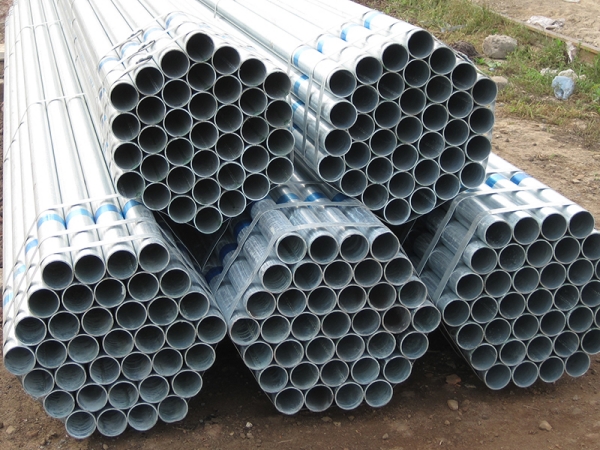A galvanized seamless steel pipe is a type of steel pipe that has undergone the galvanization process. Galvanization involves coating the steel pipe with a layer of zinc to enhance its corrosion resistance and extend its lifespan. This process is particularly beneficial for pipes that will be exposed to harsh environmental conditions, moisture, and corrosive elements. In this passage, we will talk about advantages and processing technology of galvanized seamless steel pipe.

Advantages of Galvanized Seamless Steel Pipe:
- High Pressure Resistance:
Hot-dip galvanized seamless pipes exhibit superior resistance to higher pressures compared to their counterparts.
- Long Average Service Life:
Coated with an average adhesion of 500g/m2, galvanized seamless pipes can endure over 50 years without maintenance in dry and suburban environments.
- No Maintenance Required During Use:
Hot-dip galvanized seamless pipes boast excellent weather resistance and prolonged service life, requiring no maintenance costs. In contrast to painting, which necessitates regular upkeep, this translates into substantial savings in both money and social costs.
- Good Sturdiness:
Galvanized seamless pipes demonstrate robustness, capable of withstanding mechanical damage during handling and lifting. The galvanized layer forms an alloy structure with commendable hardness and mechanical properties.
- Local Damage Protection:
Even with minor defects, galvanized seamless pipes offer protective capabilities. The chemical activity of zinc surpasses that of iron, allowing zinc to protect exposed steel, illustrating the sacrificial anode's protective property.
- Comprehensive Protection, No Dead Angles:
The immersion of the workpiece in liquid zinc during hot-dip galvanization ensures comprehensive protection. Every corner of the workpiece, especially sharp angles and concave surfaces, comes into contact with the coating, thickening it in areas challenging to reach through spraying.
- No Impact on Mechanical Properties:
Hot-dip galvanization has no adverse effects on the mechanical properties of the original design of seamless steel pipes (SMLS).
Processing Technology of Galvanized Seamless Steel Pipe:
- Avoiding Casting Defects:
To prevent shrinkage holes and shrinkage defects in seamless pipe castings, methods such as risers, cold iron, and subsidies are employed in the casting process to ensure sequential condensation.
Achieving uniform wall thickness in seamless pipe castings, avoiding sharp and right-angle structures, incorporating sawdust in molding sand, adding coke in the core, and using hollow cores and oil sand cores enhance the concession and air permeability of sand or cores, minimizing shrinkage, pores, and cracks.
- Optimizing Pouring Conditions:
Due to the poor fluidity of molten steel, measures are taken to avoid cold insulation and inadequate pouring. The wall thickness of steel castings is maintained at a minimum of 8mm, and dry or hot casting methods are employed.
Pouring temperatures are carefully adjusted, generally ranging from 1520°C to 1600°C. Higher temperatures improve fluidity but must be controlled to prevent defects such as coarse grains, thermal cracking, pores, and adhesion of sand. Small, thin-walled, and intricately shaped fine castings typically have a pouring temperature of about 150°C, close to the melting point of steel.